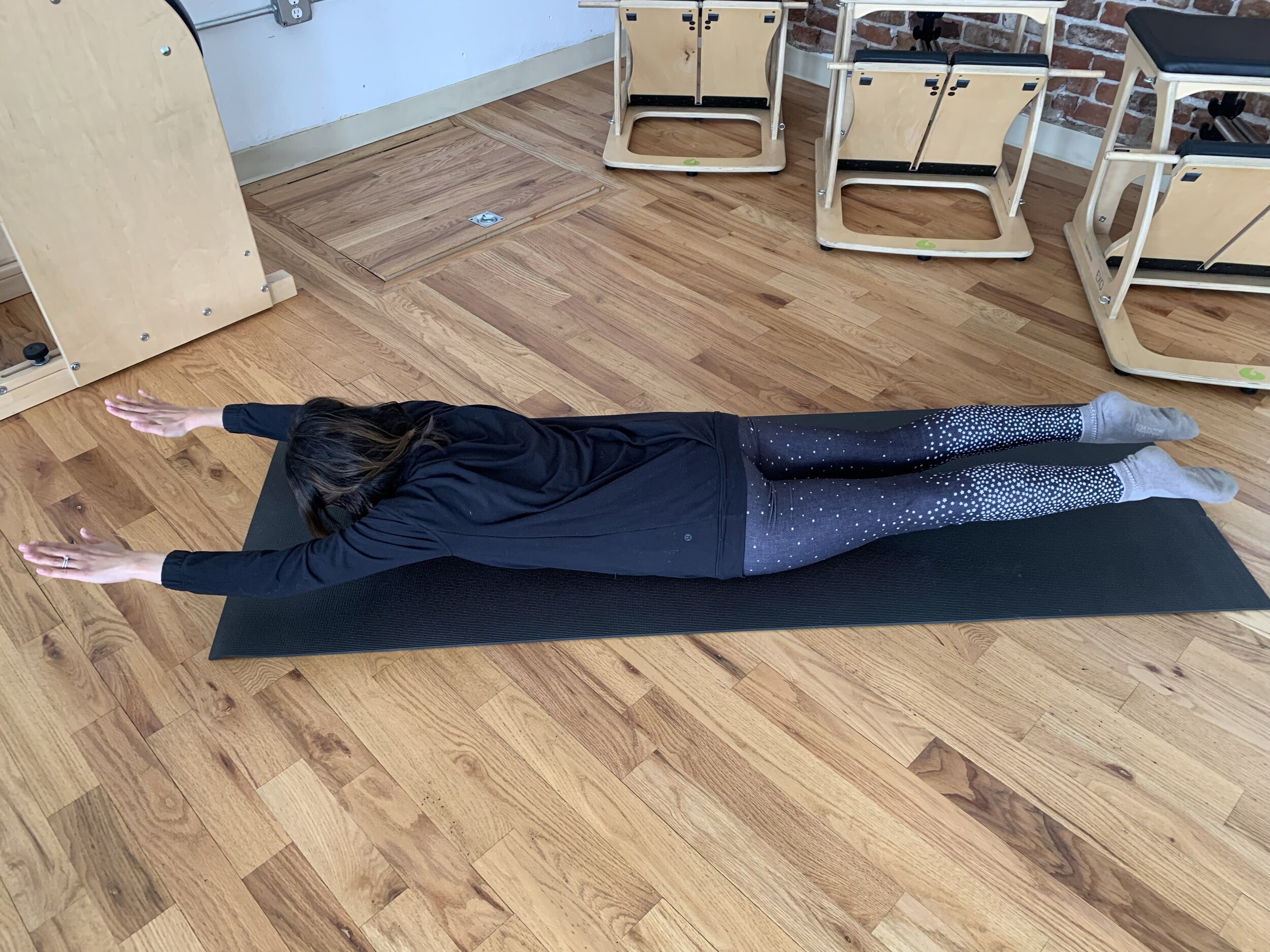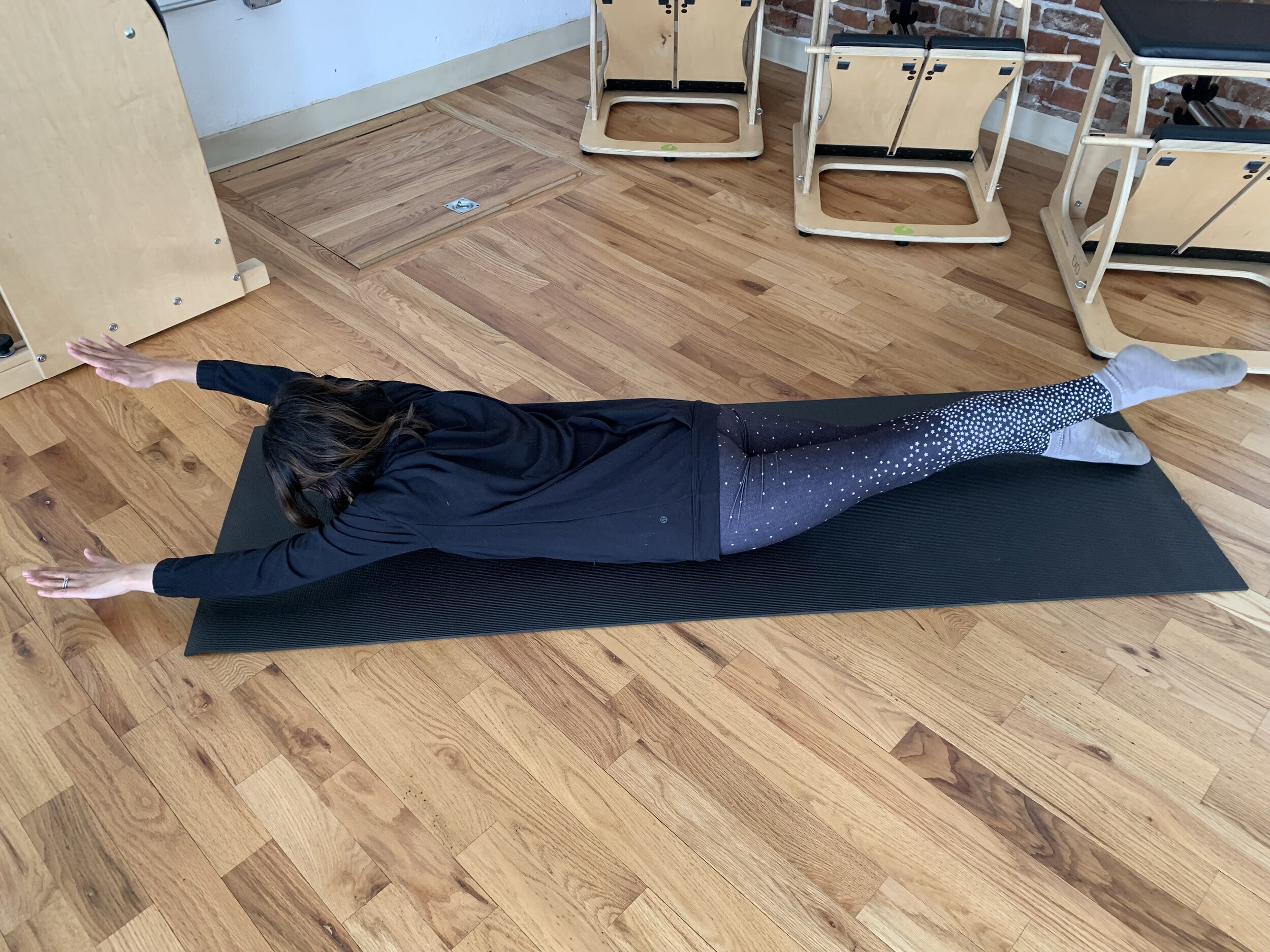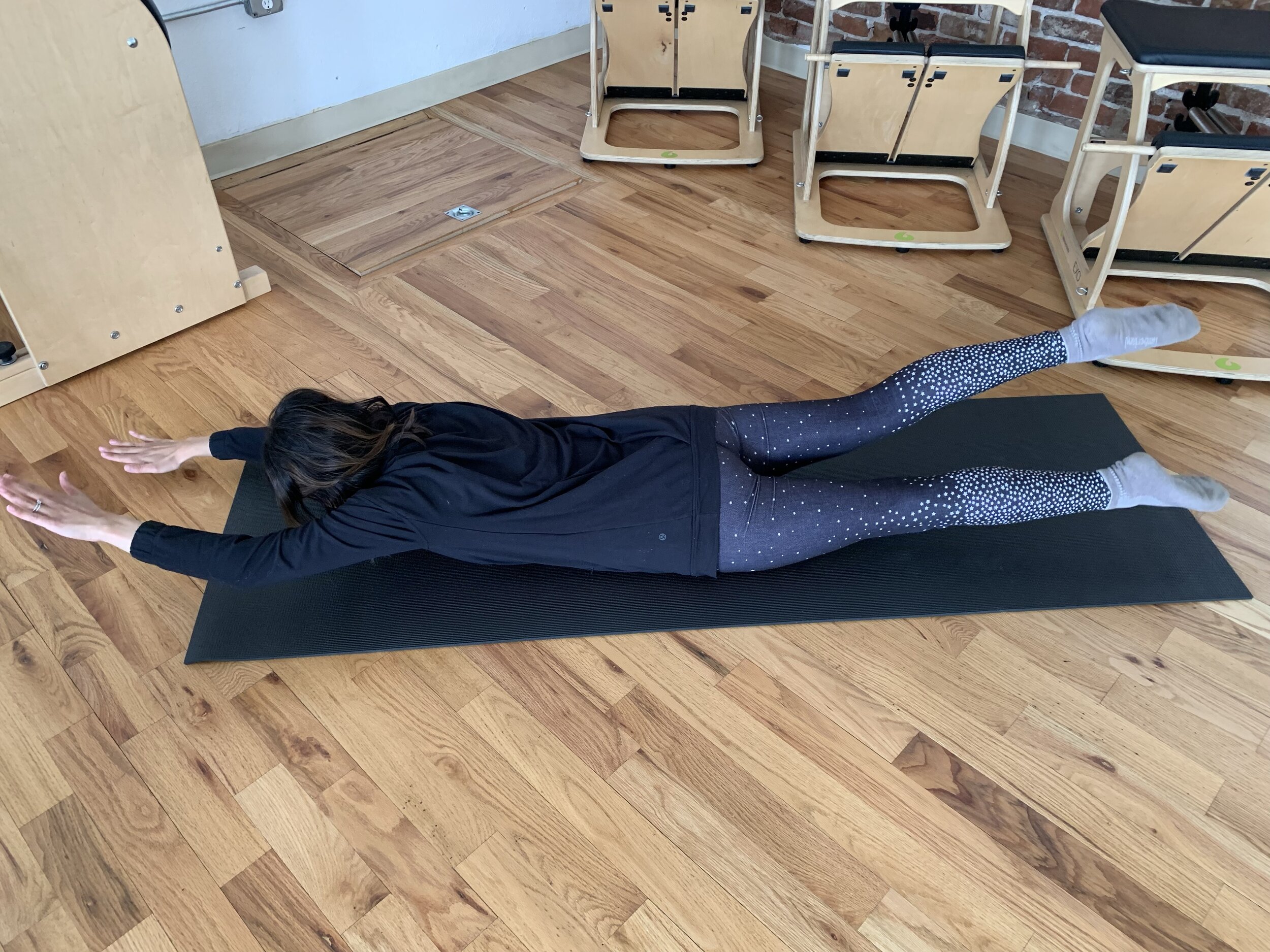Pilates for Swimmers
Summer is right around the corner, and with it come all the outdoor activities we sorely missed during the winter months. Though The Pilates Collective may be in landlocked Colorado, swimming is still a favorite way for many of us to get outside, move, and enjoy the warm weather.
Besides the satisfying feeling of plunging into a cool lake on a hot summer day, swimming is an optimal form of exercise for the body. Being suspended in water, you get a break from gravity, allowing you to work your muscles without putting pressure on your joints. That’s rare for a form of exercise, especially one that’s cardiovascular.
If you plan on spending some time swimming this summer, here’s why we recommend you supplement with Pilates.
What Pilates Exercises are Good for Swimmers?
The most common injuries for serious swimmers involve the shoulder joint. Swimming requires both an extreme range of motion in the shoulder as well as a great deal of strength. In order to prevent injuries and swim effectively, it’s important to find a healthy balance between the two.
To work towards this balance, be sure you’re doing active stretches, meaning your muscles remain engaged as you stretch. Ideally, every stretch you do should be active: you should never be “hanging” on your joints.
Take this shoulder stretch as an example.
The cross-body shoulder stretch is a great way to lengthen the muscles on the back of your shoulder joint, namely those attached to your shoulder blade. As you were probably instructed in elementary school gym class, you do this by pulling one arm across your chest and using your other arm as leverage. Do this passively, however, and you risk stretching the tendons and ligaments of the joint. Tendons and ligaments stabilize a joint, ensuring only the appropriate parts move as the limb goes through its range of motion. Stretching these destabilizes the joint and puts us at greater risk of injury.
To make sure your muscles are getting the benefit of this stretch, be intentional about engaging them. Try this: Before pulling your right arm across your body, hug your shoulder blades together alongside your spine. Keep the muscles of your right shoulder blade engaged and pinned back as you reach your arm forward. Use your left arm as leverage, bend your right elbow and gently hug your right arm closer to your chest. Allow your shoulder blade to slide away from your spine (to the right), but keep the muscles engaged. You’ll also want to activate your abdominals and keep both shoulders away from your ears. Here’s a great video demonstrating the right and wrong ways to do this stretch.
The same principles are true for every stretch: can you engage the muscles as you lengthen? How can you recruit the surrounding muscles to support the one you’re aiming to stretch?
How Can I Improve my Swimming Strength?
If you’ve done Pilates, you probably know you’re not quite as symmetrical as you’d like to believe. Most of us have a stronger arm, a leg that’s easier to balance on, and a side of obliques that tires far later than the other. It may feel subtle, but these imbalances are magnified when you get in the water. If your left leg is stronger, for example, it might kick harder than the right leg. The right side of your back and your right arm may compensate for the lagging right leg, creating further imbalances in your torso and upper body. Your right arm working significantly harder than your left may tighten the muscles on the right side of your neck and your right traps. This could then affect your breathing: you may lose range of motion on your right side, which affects your ability to turn your head to the right and inhale.
Efficient swimming requires a balance of the body from right to left, and there’s no better place to achieve this than in the Pilates studio.
The many “sided” exercises we do offer a glimpse into how your body differs from right to left. Take note of these differences, and perform a few more repetitions on the side that doesn’t feel as strong. If you need some feedback, ask your instructor how you can test the difference between the two sides (and/or ask if she can let you know from observing).
Swimming primarily works the superficial muscles of the arms, legs, back, and shoulders. By superficial, we mean the ones closest to the surface; the ones you can easily see. While Pilates recruits those as well, we’re primarily concerned with the deep internal muscles that help support your skeleton, including your abdominals, the musculature that supports your spine, your breathing muscles, and your pelvic floor.
Many instructors refer to this as your core because these muscles are so central to our structure. Unfortunately, the term “core” has now become somewhat of a misnomer for abs. Yes, we want you to engage your abdominals, but there’s so much more to it than just working your 6-pack muscles!
Pilates teaches you how to coordinate engagement of these deep internal muscles to support the rest of your body. Coordinate all of that with your breath and you’ll be unstoppable.
Improve Breathing for Swimming
The best swimmers are experts at timing their breath with their movement. Guess what? The same is true for those who do Pilates.
In class, your Pilates instructor will likely mention breathing a lot, encouraging you to find a pattern of breath that supports your movement. Breath is one of the principle tenets of Pilates, and one that Joseph Pilates frequently emphasized. Breathing in the proper rhythm allows us to support our muscles with more power (i.e., oxygen) and get more out of each repetition. That’s why you breathe more quickly when doing cardiovascular activities like biking or running: your muscles are firing quickly and need more oxygen in order to keep going.
Pilates also teaches us how to deepen our breathing. Depending on the exercise, your instructor might suggest you breathe into your back, chest, sides, or belly. Imagining air inflating the various spaces of your chest cavity allows you to expand the musculature around your ribs and lungs in order to take in more air.
Both of these concepts translate beautifully to swimming. When doing the swimming technique most of us were taught during lessons (which is called the front crawl...who knew!?), we time our inhale with the forward stroke of one arm and our exhale with the forward stroke of the other arm. This allows us to continuously breathe without breaking our rhythm or losing speed. The more we can pair breath with movement in Pilates, the more practiced we’ll be at it in the water. Plus, by cultivating deeper breathing and a larger lung capacity, we’ll allow ourselves more endurance and faster speeds when swimming.
Pilates Swimming Exercise
You can put all of this into practice by doing the Pilates exercise known as swimming.
Start laying down on your belly with your legs long and slightly separated. Have your arms down in a narrow V on either side of your ears. Before doing anything else, engage your abdominals by pulling your navel into your spine. In this orientation, it will feel like you’re pressing your pubic bone down into the mat and pulling your belly away from the floor. Do your best to maintain that engagement as you move.
On an inhale, float your legs, arms, head, and chest off the mat. Lift your right arm and left leg slightly higher, then switch, lifting your left arm and right leg slightly. Continue alternating like you’re doing a flutter kick and speed up until you can do 4 sets on an inhale and 4 on an exhale.
Do this for 3 full breaths, then lower everything down to the mat. To give your lower back a break, rock your hips slightly from side to side between sets. You can also bend your knees and windshield wiper your legs if that feels good. Try to do 3 sets of these with breaks in between, maintaining your abdominal engagement and breathing the entire time. When you’re done, push back into a child’s pose.
The Pilates Swimming exercise is truly a full-body workout: it engages the entire back line of the body from arms to torso to legs, and when done correctly, works the abdominals as well.
Depending on how frequently you’re swimming or doing other forms of movement, we recommend practicing Pilates between one and three times a week. And if you’d like more guidance to help you specifically with swimming, talk to your Pilates instructor before your next class.





